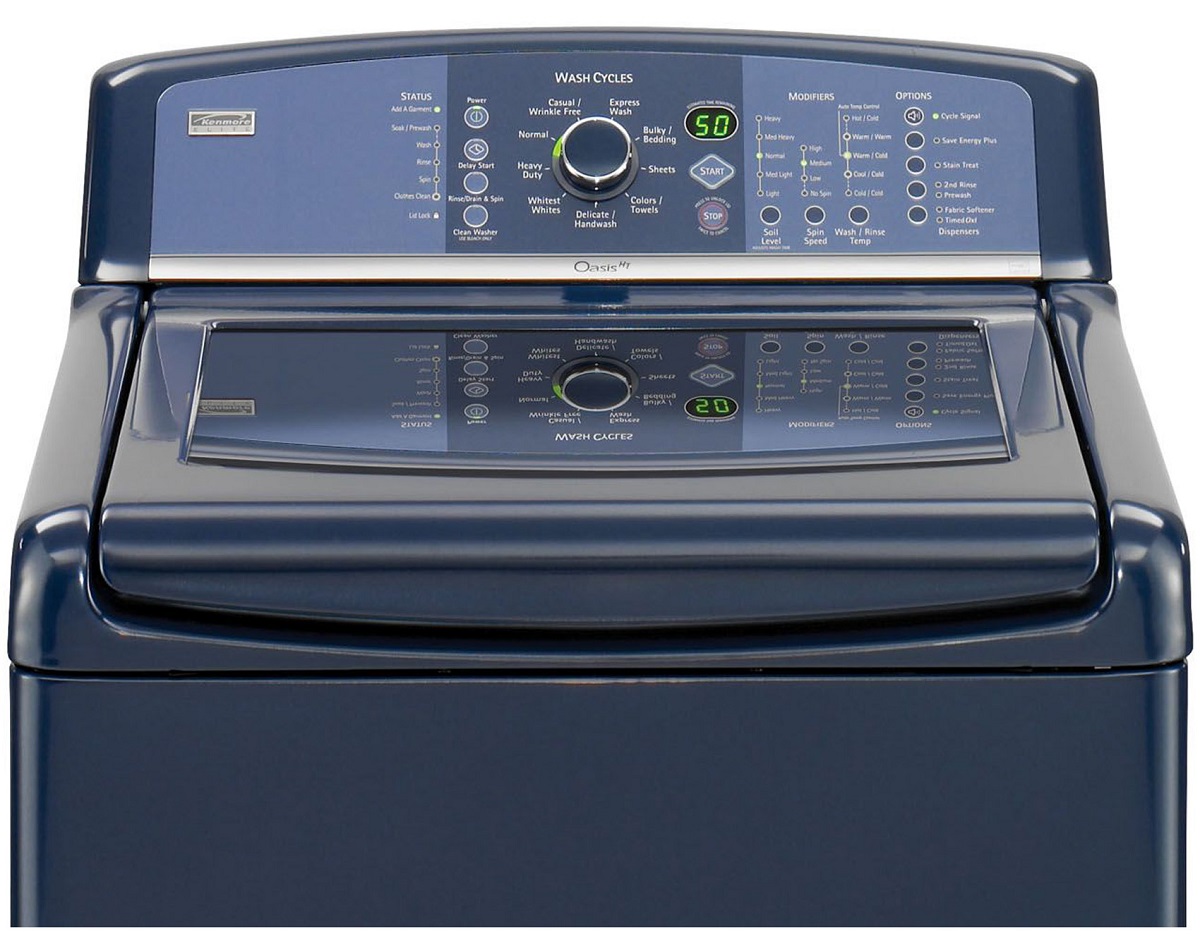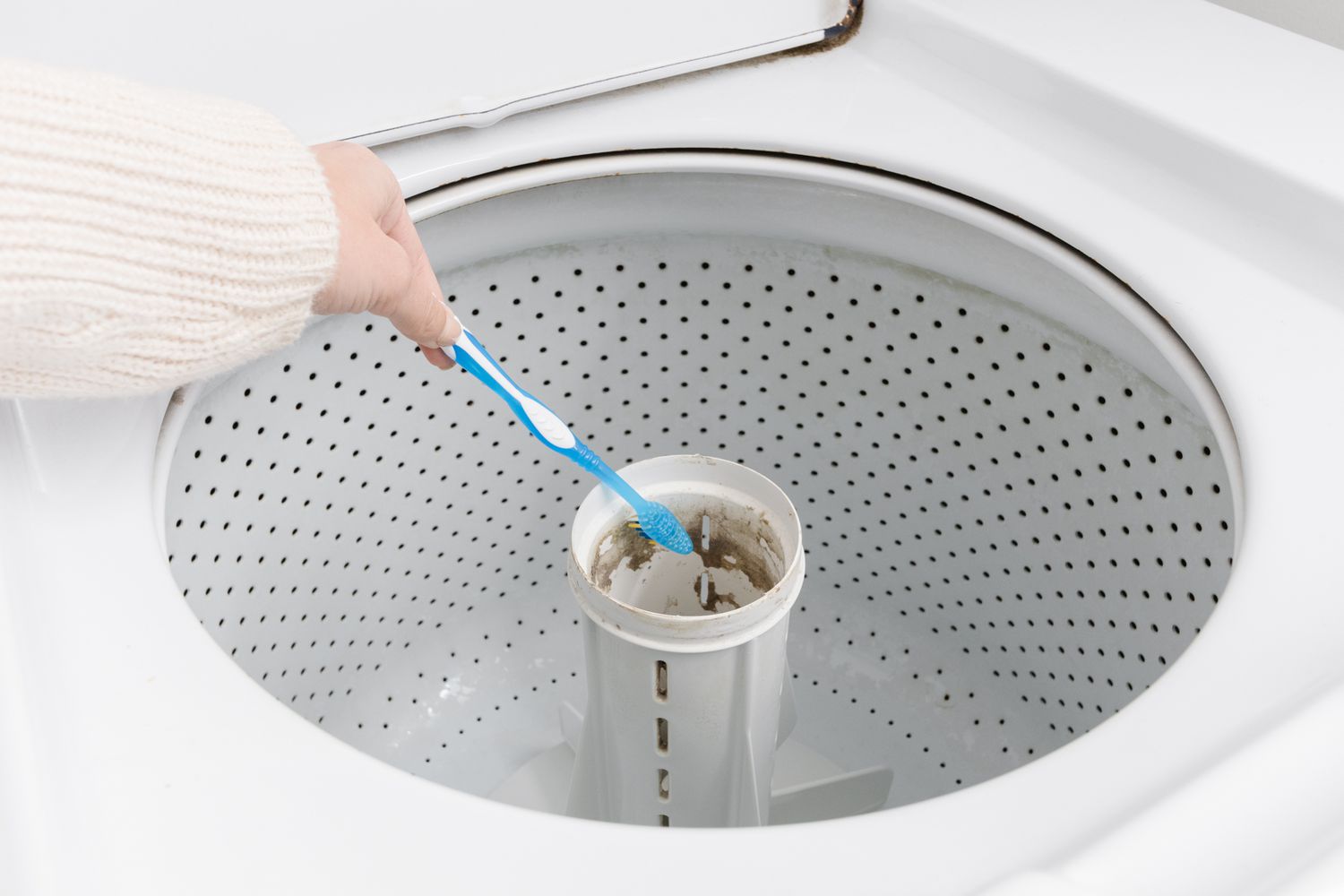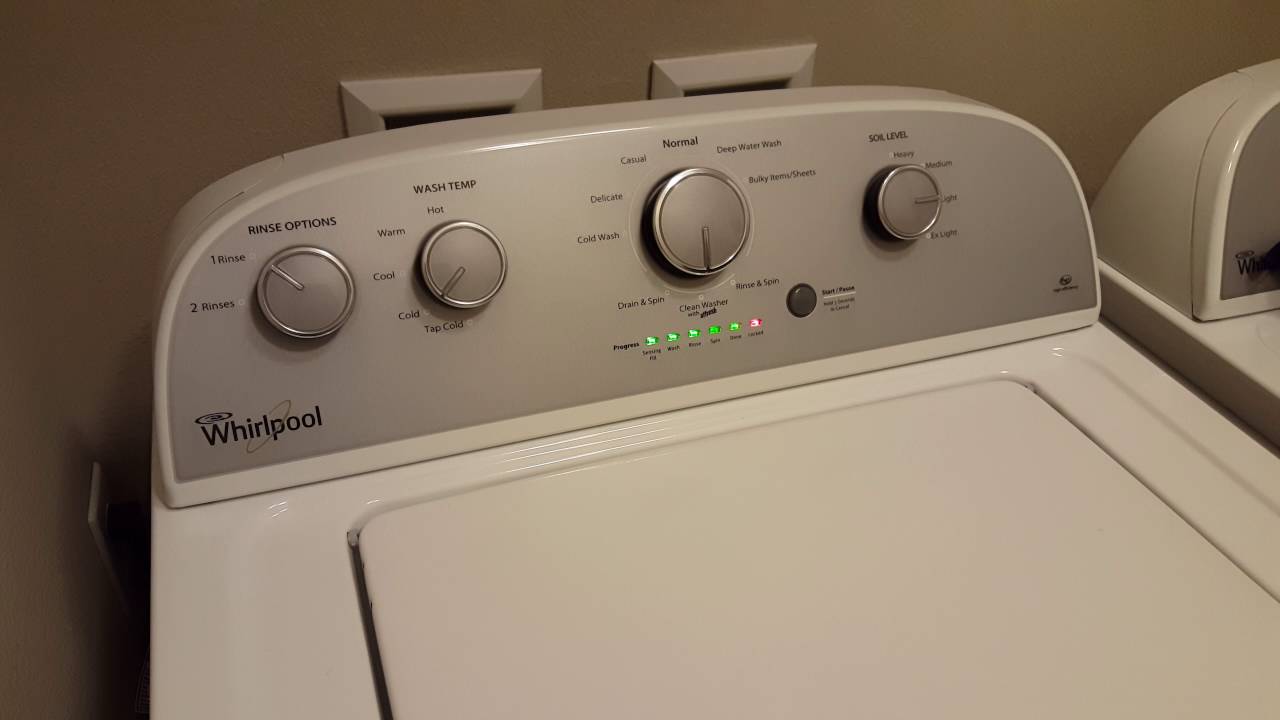Home>Home Appliances>Laundry Appliances>How To Wash Bedding In A Washing Machine


Laundry Appliances
How To Wash Bedding In A Washing Machine
Published: February 21, 2024
Learn the best way to wash bedding in a washing machine with our expert tips. Discover the right laundry appliances and techniques for clean, fresh bedding.
(Many of the links in this article redirect to a specific reviewed product. Your purchase of these products through affiliate links helps to generate commission for Storables.com, at no extra cost. Learn more)
Preparing the Bedding for Washing
Before tossing your bedding into the washing machine, it's essential to prepare it properly to ensure a thorough and effective cleaning process. Here's a step-by-step guide to help you get your bedding ready for a refreshing wash:
-
Strip the Bed: Start by removing all pillows, shams, and decorative covers from the bed. Then, proceed to strip off the sheets, duvet cover, and any other bedding items that need cleaning. This step ensures that you have all the necessary items ready for washing.
-
Check for Stains: Take a moment to inspect the bedding for any visible stains or spots. If you notice any soiled areas, pre-treat them with a stain remover or a bit of liquid detergent. Gently rub the product into the stained areas and let it sit for a few minutes to help lift the stains before washing.
-
Sort the Bedding: It's crucial to separate the bedding items based on their colors and fabric types. Sort the whites, light colors, and dark colors into separate piles to prevent color bleeding during the wash cycle. Additionally, consider washing delicate fabrics, such as silk or satin sheets, separately from sturdier materials like cotton or polyester.
-
Check the Care Labels: Before proceeding, take a moment to review the care labels on the bedding items. The care labels provide valuable information regarding the recommended water temperature, washing instructions, and any specific precautions to follow. Adhering to these guidelines can help preserve the quality and longevity of your bedding.
-
Shake Out Debris: Give the bedding items a good shake to dislodge any loose debris, such as dust, pet hair, or crumbs. This simple step helps minimize the amount of debris that ends up in the washing machine, reducing the risk of clogging the machine's drain or filter.
By taking the time to prepare your bedding for washing, you set the stage for a successful laundering process. This proactive approach not only ensures cleaner and fresher bedding but also helps maintain the condition of your linens for years to come. Now that your bedding is prepped and ready, it's time to move on to the next crucial step: choosing the right detergent and settings for your washing machine.
Key Takeaways:
- Prepare your bedding by stripping the bed, checking for stains, sorting by color, and reviewing care labels. Shake out debris to ensure a successful washing process and maintain the quality of your linens.
- Choose the right detergent and machine settings to optimize the washing process. Properly load the bedding into the washing machine and consider extra cleaning boosters for tough stains and odors. Lastly, dry your bedding using the appropriate method to maintain its quality and freshness.
Read more: How To Wash A Dog Bed In The Washing Machine
Choosing the Right Detergent and Settings
Selecting the appropriate detergent and settings for your washing machine is a pivotal aspect of ensuring the cleanliness and longevity of your bedding. With a myriad of detergent options and machine settings available, making the right choices can significantly impact the outcome of the laundering process. Here's a comprehensive guide to help you navigate through this crucial step:
Choosing the Right Detergent
The type of detergent you use plays a vital role in effectively cleaning your bedding. When it comes to selecting a detergent, consider the following factors:
- Formulation: Opt for a high-quality laundry detergent that is suitable for the specific fabric of your bedding. For instance, if you're washing delicate linens, choose a gentle, non-abrasive detergent to prevent damage.
- Stain-fighting Power: If your bedding exhibits tough stains or lingering odors, opt for a detergent with powerful stain-fighting properties. Look for products that are designed to tackle stubborn stains while maintaining the fabric's integrity.
- Fragrance Preferences: Some detergents offer a variety of scents to impart a fresh aroma to your bedding. Consider your fragrance preferences and choose a detergent that aligns with your olfactory preferences.
Selecting the Washing Machine Settings
In addition to choosing the right detergent, understanding and utilizing the appropriate washing machine settings are essential for achieving optimal results. Here's how to make informed decisions when setting up your washing machine:
- Water Temperature: Different fabrics and soil levels require specific water temperatures for effective cleaning. Refer to the care labels on your bedding to determine the recommended water temperature. For instance, use hot water for white linens and heavily soiled items, while opting for cold water for delicate fabrics and bright colors to prevent fading.
- Cycle Selection: Most modern washing machines offer a variety of cycles tailored to different fabric types and soil levels. Select the appropriate cycle based on the fabric and level of dirt on your bedding. For instance, use a gentle cycle for delicate fabrics and a heavy-duty cycle for heavily soiled items.
- Load Size: It's crucial to consider the size of your bedding load when setting the machine. Overloading the machine can lead to ineffective cleaning, while underloading may result in excessive wear on the fabric. Follow the manufacturer's guidelines for load size to ensure optimal cleaning and energy efficiency.
By carefully considering the detergent and machine settings, you can optimize the laundering process and ensure that your bedding emerges clean, fresh, and well-maintained. With the right choices in detergent and settings, you set the stage for a successful washing cycle, bringing you one step closer to enjoying clean, revitalized bedding.
Loading the Bedding into the Washing Machine
Once you've prepared your bedding and selected the appropriate detergent and settings, the next crucial step is loading the bedding into the washing machine. Properly loading the machine ensures that the bedding receives an effective and thorough cleaning. Here's a detailed guide on how to load your bedding into the washing machine for optimal results:
-
Evenly Distribute the Bedding: To prevent the washing machine from becoming unbalanced during the cycle, it's important to distribute the bedding evenly. Start by placing the fitted sheet, flat sheet, and pillowcases into the machine, ensuring that they are spread out evenly. This helps maintain balance and allows the detergent and water to reach all areas of the bedding.
-
Avoid Overcrowding: Overloading the washing machine with bedding can hinder the cleaning process and lead to unsatisfactory results. It's essential to avoid overcrowding the machine to allow ample space for the bedding to move freely during the wash cycle. This promotes better detergent distribution and thorough soil removal.
-
Add Balance: If you're washing a large comforter or duvet, it's advisable to add a few additional items, such as towels or small linens, to help balance the load. This prevents the machine from becoming unbalanced during the spin cycle, which can cause excessive vibration and potential damage to the appliance.
-
Close Zippers and Fasten Snaps: Before loading items with zippers, buttons, or snaps, ensure that they are securely fastened. This prevents these components from snagging or causing damage to other bedding items during the wash cycle. Additionally, closing zippers and fastening snaps helps maintain the overall quality and appearance of the bedding.
-
Consider Fabric Softener: If you prefer using fabric softener, add it to the designated compartment in the washing machine. Fabric softener can help reduce static, impart a fresh scent, and soften the bedding during the rinse cycle, enhancing the overall laundering experience.
By following these steps, you can ensure that your bedding is loaded into the washing machine in a manner that promotes effective cleaning and preserves the quality of the linens. With the bedding properly loaded, you're ready to initiate the wash cycle, knowing that your linens are set up for a thorough and refreshing cleaning process.
Adding Extra Cleaning Boosters
In some instances, you may encounter particularly stubborn stains or odors on your bedding that require additional cleaning power beyond what regular detergent can provide. This is where extra cleaning boosters come into play, offering targeted solutions to tackle tough stains and enhance the overall cleanliness of your bedding. Here's a comprehensive exploration of the various extra cleaning boosters that can elevate the effectiveness of your laundering process:
Enzyme-Based Stain Removers
Enzyme-based stain removers are formulated to break down and dissolve specific types of stains, such as protein-based stains like blood, sweat, and food residues. These powerful cleaners contain enzymes that target and digest the proteins present in stubborn stains, effectively lifting them from the fabric. When dealing with tough, protein-based stains on your bedding, applying an enzyme-based stain remover to the affected areas before washing can significantly improve the stain removal process.
Oxygenated Bleach
Oxygenated bleach, also known as color-safe bleach, is a gentler alternative to chlorine bleach and is suitable for brightening and whitening fabrics without causing color fading or damage. This type of bleach releases oxygen ions when mixed with water, effectively lifting stains and brightening fabrics. When added to the wash cycle, oxygenated bleach can revitalize dingy or discolored bedding, restoring its vibrancy and freshness.
Vinegar
White vinegar is a versatile and natural cleaning agent that can serve as an effective cleaning booster for your bedding. Adding a cup of white vinegar to the rinse cycle helps eliminate lingering odors, soften the fabric, and remove detergent residue from the bedding. Additionally, vinegar can act as a natural fabric softener, leaving your bedding feeling luxuriously soft and free of any unpleasant smells.
Baking Soda
Baking soda is renowned for its odor-neutralizing and gentle abrasive properties, making it an excellent addition to your laundry routine. When included in the wash cycle, baking soda helps neutralize odors, lift stains, and brighten fabrics. Its gentle nature makes it suitable for use on a wide range of fabrics, making it a versatile and effective cleaning booster for your bedding.
Pre-Soaking
For particularly stubborn stains or heavily soiled bedding, pre-soaking the items in a solution of water and a designated stain-removing product can work wonders. This allows the cleaning solution to penetrate the fabric and loosen tough stains before the actual wash cycle, resulting in more effective stain removal and overall cleanliness.
By incorporating these extra cleaning boosters into your laundering routine as needed, you can address specific cleaning challenges and elevate the overall cleanliness and freshness of your bedding. Whether it's targeting stubborn stains, eliminating odors, or enhancing the brightness of your linens, these boosters offer tailored solutions to ensure that your bedding emerges from the wash cycle revitalized and impeccably clean.
Drying the Bedding Properly
After a thorough washing cycle, the final step in the laundry process is drying the bedding properly. This critical stage not only ensures that your linens are fully dried and ready for use but also plays a significant role in maintaining their quality and longevity. Here's a detailed guide on how to effectively dry your bedding to achieve optimal results:
Selecting the Right Drying Method
When it comes to drying your bedding, you have several options to consider, each with its own advantages and considerations:
-
Tumble Drying: This method involves using a dryer to quickly and efficiently dry your bedding. It's essential to select the appropriate heat setting based on the fabric type and care instructions. For instance, use a low heat setting for delicate fabrics and a higher heat setting for sturdier materials.
-
Line Drying: Line drying your bedding can be a natural and energy-efficient option, allowing the gentle breeze and sunlight to freshen and dry your linens. However, it's important to avoid direct sunlight for extended periods, especially for colored fabrics, as it may lead to fading.
-
Air Drying: If weather permits, air drying your bedding outdoors can impart a fresh, natural scent to your linens. Ensure that the bedding is evenly spread out to facilitate thorough drying and to prevent wrinkles.
Read more: How To Reset A Washer
Preparing the Bedding for Drying
Before proceeding with the chosen drying method, it's crucial to prepare the bedding for the drying process:
-
Shake Out Wrinkles: Give the bedding a good shake to minimize wrinkles and ensure that the fabric is evenly spread out for efficient drying.
-
Check for Dampness: Before drying, ensure that the bedding is adequately spun in the washing machine to remove excess water. This step helps expedite the drying process and prevents prolonged exposure to moisture, which can lead to musty odors.
-
Separate Items: If you're drying multiple bedding items, such as sheets, pillowcases, and duvet covers, consider separating them to facilitate even drying and prevent tangling.
Implementing Proper Drying Techniques
Regardless of the chosen drying method, there are essential techniques to employ for optimal results:
-
Use Dryer Balls: When tumble drying, adding dryer balls to the load can help fluff and aerate the bedding, reducing drying time and minimizing wrinkles.
-
Check for Dryness: Periodically check the bedding during the drying process to assess its dryness. Avoid over-drying, as it can lead to excessive wrinkling and potential damage to the fabric.
-
Fold or Store Promptly: Once the bedding is dry, promptly fold or store it to prevent wrinkles and maintain its freshness. If using a dryer, remove the bedding promptly to prevent wrinkles from setting in.
By following these guidelines and implementing proper drying techniques, you can ensure that your bedding emerges from the drying process fresh, clean, and impeccably maintained. Whether you opt for the convenience of a dryer or the natural freshness of line drying, the proper drying of your bedding is essential for preserving its quality and ensuring a comfortable and inviting sleep environment.
Frequently Asked Questions about How To Wash Bedding In A Washing Machine
Was this page helpful?
At Storables.com, we guarantee accurate and reliable information. Our content, validated by Expert Board Contributors, is crafted following stringent Editorial Policies. We're committed to providing you with well-researched, expert-backed insights for all your informational needs.













0 thoughts on “How To Wash Bedding In A Washing Machine”